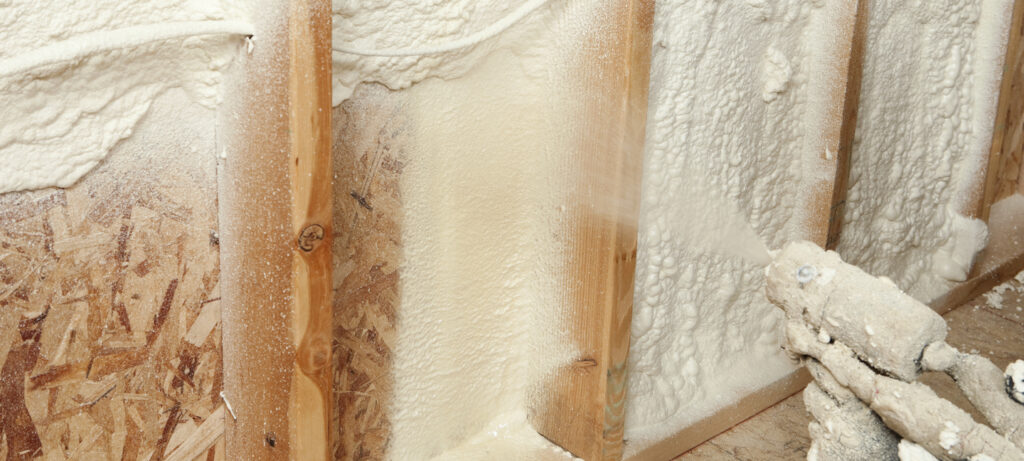- Traditional insulation leaves gaps and spaces, where air infiltration becomes a major source of energy loss.
- Spray foam seals spaces completely, creating an effective vapor barrier that restricts air leakage
- For commercial and residential applications, spray foam presents the best air sealing properties and the highest R-Value per inch.
- It’s no secret that proper insulation provides significant annual savings on heating and cooling costs.
- Buildings and homes protected with spray foam can easily recoup the install costs through lower utility bills.

Installing spray foam is easy to do and will dramatically improve a building or home’s energy efficiency and thermal resistance. Closed-cell foam is so efficient; just 3 inches of it applied inside your wall cavity provides an insulation value of over R18!. Spray foam is specially formulated for both new construction and existing homes and buildings.
- Closed Cell, Fast Rise Formula: For new construction and open walls. An ideal choice for attic insulation and crawl spaces.
- Closed Cell, Slow Rise Formula: For existing walls and retrofits
- Open Cell Formula: For soundproofing and other specialty applications.

Open Cell vs. Closed Cell Foam: Which Should I Choose?
So, you are trying to determine which type of foam you should use for your jobs?
It’s trickier than it seems – though closed cell and open cell foam both insulate a home, they do it in different ways. Please read our guide to examine open-cell vs. closed-cell foam and help you pick the best product for your project.





